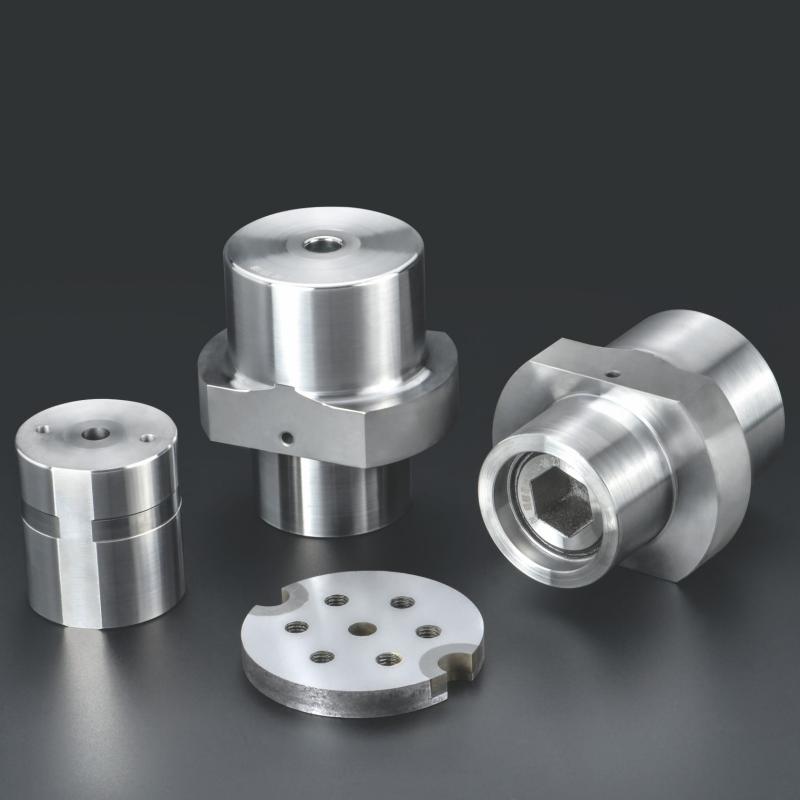Carbide Nut Die: Characteristics, Applications, and Maintenance
Introduction
Carbide nut dies are precision cutting tools used for threading nuts and other cylindrical components. Made from Tungsten Carbide, these dies offer superior hardness, wear resistance, and longevity compared to high-speed steel (HSS) dies. They are widely used in industries requiring high-precision threading operations.

Characteristics of Carbide Nut Dies
1. Exceptional Hardness
Carbide nut dies exhibit a Rockwell hardness of 90-92 HRA, significantly higher than HSS dies (typically 60-65 HRC). This hardness ensures minimal deformation during threading, even when processing hardened materials.
2. Superior Wear Resistance
With a wear resistance 8-10 times greater than HSS, Carbide Dies maintain sharp cutting edges for extended periods. Laboratory tests show carbide dies can produce over 500,000 threads before requiring reconditioning, compared to 50,000-100,000 for premium HSS dies.
3. High Thermal Stability
Carbide maintains its structural integrity at temperatures up to 1000°C (1832°F), compared to 600°C (1112°F) for HSS. This property reduces thermal expansion during high-speed operations, maintaining dimensional accuracy within ±0.005mm across production runs.
4. Chemical Inertness
The cobalt-bonded Tungsten Carbide matrix demonstrates excellent resistance to chemical reactions with cutting fluids and workpiece materials, reducing galling and material adhesion by 70-80% compared to steel dies.
Application Scenarios
1. Automotive Component Manufacturing
Carbide nut dies thread critical suspension components and engine fasteners from grade 8.8 to 12.9 steel at production rates exceeding 1500 pieces/hour with consistent quality.
2. Aerospace Fastener Production
Used for threading titanium (Ti-6Al-4V) and Inconel fasteners where HSS dies would fail after 50-100 pieces. Carbide dies maintain tolerance of ASME B1.1 Class 2A for over 2000 cycles in these superalloys.
3. Oil and Gas Equipment
Essential for threading corrosion-resistant alloy (CRA) components like 13Cr and duplex stainless steels used in downhole tools, where thread integrity must withstand 10,000 psi pressures.
4. High-Volume Electronics
Micro-threading of M1-M3 brass and aluminum connectors for consumer electronics, achieving ±0.002mm pitch diameter tolerance at speeds up to 8000 RPM.
Maintenance Procedures
1. Cleaning Protocol
After each shift, immerse dies in ultrasonic cleaner with pH-neutral solvent for 10-15 minutes at 40-50°C (104-122°F). Never use wire brushes that can damage cutting edges with 2-5μm edge radii.
2. Lubrication Requirements
Apply EP (extreme pressure) lubricant with minimum 5% sulfur content before storage. For aluminum threading, use non-staining, chlorine-free lubricants to prevent material transfer.
3. Storage Conditions
Store in climate-controlled environment (20±2°C/68±4°F, 40-50% RH) with individual protective cases. Vibration-isolated storage prevents micro-chipping of cutting edges.
4. Reconditioning Schedule
Monitor flank wear using 20x magnification. When wear land exceeds 0.1mm, send for professional regrinding. Properly maintained carbide dies can undergo 3-5 regrinds before retirement.
5. Handling Procedures
Always use non-metallic handling tools to prevent edge damage. Impact from >0.5J can cause microfractures reducing tool life by 30-40%.
Operational Best Practices
1. Speed and Feed Parameters
For steel threading: 15-25 m/min surface speed with 0.05-0.1mm/rev feed. For stainless: reduce speed by 30% and increase feed by 15% to prevent work hardening.
2. Alignment Requirements
Maintain <0.001mm/mm misalignment between die and workpiece axis. Use floating die holders with ±2° compensation to prevent thread form errors.
3. Chip Management
Implement through-spindle coolant at 10-15 bar pressure for blind holes. Chip accumulation increases cutting forces by 200-300%, accelerating wear.
Economic Considerations
1. Cost-Benefit Analysis
While carbide dies cost 3-5x more than HSS initially, their 8-10x longer life and 30-50% higher productivity deliver 40-60% lower cost-per-thread in high-volume applications.
2. ROI Calculation
For a 500,000 piece/year production of M10x1.5 steel nuts, carbide dies achieve payback in 4-6 months through reduced changeover time and scrap rates below 0.2%.











